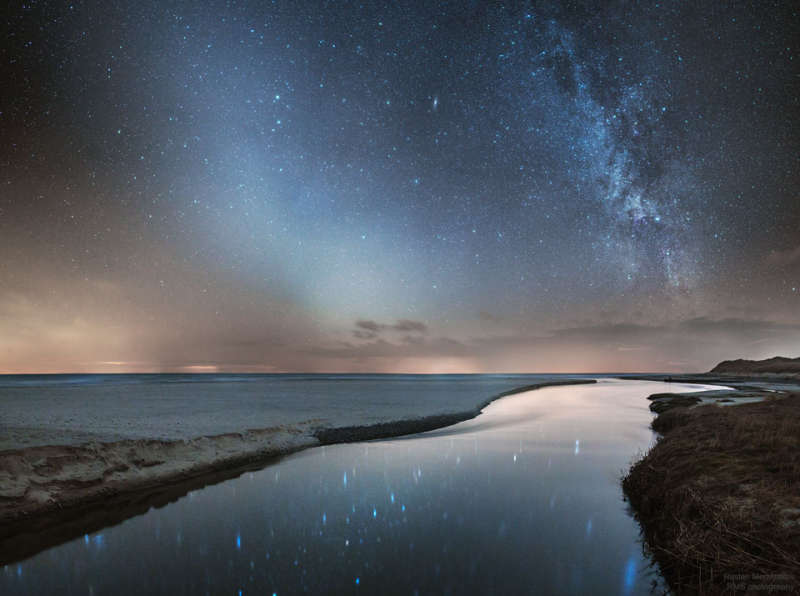
|
Credit & Copyright: Ruslan Merzlyakov
(RMS Photography)
Explanation:
What are these two bands in the sky?
The more commonly seen band is the one on the right and is the central band of
our Milky Way galaxy.
Our Sun orbits in the disk of this
spiral galaxy, so that from inside, this disk
appears as a band of comparable brightness all the way
around the sky.
The Milky Way band
can also be seen all year -- if out
away
from city lights.
The less commonly seem band, on the left, is
zodiacal light --
sunlight reflected from dust orbiting the Sun in our Solar System.
Zodiacal light is brightest near the Sun and so is best
seen just before sunrise or just after sunset.
On some evenings in the north,
particularly during the months of March and April, this ribbon of
zodiacal light
can appear quite prominent after sunset.
It has recently been determined that
zodiacal dust was mostly expelled by comets that have passed
near Jupiter.
Only on certain times of the year will the two bands be seen side by side,
in parts of the sky, like this.
Here the two streaks of light appear like the continuation of the banks of the
Liver River into the sky.
The featured
panorama of consecutive exposures was recorded about three weeks ago in
North Jutland,
Denmark.
|
January February March April May June July August September October November December |
| ||||||||||||||||||||||||||||||||||||||||||||||||
NASA Web Site Statements, Warnings, and Disclaimers
NASA Official: Jay Norris. Specific rights apply.
A service of: LHEA at NASA / GSFC
& Michigan Tech. U.
Based on Astronomy Picture
Of the Day
Publications with keywords: Milky Way - zodiacal light
Publications with words: Milky Way - zodiacal light
See also:
- APOD: 2025 July 2 Á Milky Way Through Otago Spires
- APOD: 2025 May 20 Á Milky Way over Maunakea
- APOD: 2025 May 13 Á Gaia Reconstructs a Top View of our Galaxy
- APOD: 2025 May 12 Á Gaia Reconstructs a Side View of our Galaxy
- Galaxies in Space
- APOD: 2025 February 9 Á Milky Way over the Australian Pinnacles
- APOD: 2024 November 24 Á Journey to the Center of the Galaxy
